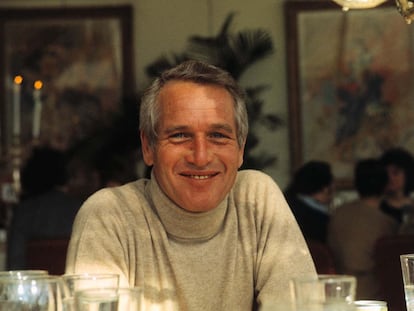Tom Green, the man who pioneered cringe comedy and is now a farmer
The comedian rose to fame for his crude pranks and shock humor, which influenced shows like ‘Jackass.’ Now he runs a farm in his native Canada and has returned to the screen with three documentaries that offer a glimpse into his new life
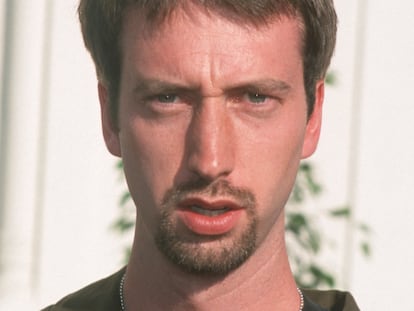
Tom Green, 53, is, or at least was, one of the most essential figures in American pop culture. Without him, shows like Jackass (2000), Punk’d (2003), or the controversial Joe Rogan podcast — currently the most listened-to podcast in the world — might never have existed. (Though some might argue the world wouldn’t have missed much.) Green was at the heart of a culture defined by media exhibitionism, pushing both humor and the patience of his targets to their limits. He was the “class clown willing to do anything for a laugh, no matter how humiliating, degrading, or dangerous.” A lanky Canadian who revolutionized comedy from his parents’ living room, with work defined as “true punk-rock comedy.”
He may not have been the first, but he was certainly the loudest to spark an industry that now generates millions. Now, perhaps out of a need for reinvention or a midlife crisis, Green — who left Los Angeles during the pandemic, returned to his native Canada, bought a van and a farm, and swapped national radio stations for small theaters — shares the result of his five years of transformation. After years of relative silence, he now returns to the spotlight with three new projects on Amazon Prime Video: the standup special Tom Green: I Got A Mule!, the documentary This is The Tom Green Documentary, and the reality show Tom Green Country, where he talks about his life as a farmer.
Green first gained national attention for pretending to copulate with a dead moose. The sketch, broadcast on The Tom Green Show in 1999, became so infamous that Eminem referenced it the following year in the lyrics to his hit The Real Slim Shady: “Sometimes I wanna get on TV and just let loose / But can’t, but it’s cool for Tom Green to hump a dead moose.”
The act was entirely improvised — Green was at his parents’ house when he saw a moose that had been run over on the road. Without hesitation, he climbed on top of it, pretending to have sex with it while filming himself. He had no idea it would change his life. “I thought it would only be seen once at midnight on local television,” he admits in his documentary, “but it went viral long before that word was ever associated with anything other than the flu.”

Canadian teenagers had noticed Tom Green long before his fame exploded in the United States. He was young, arrogant, and a hyperactive, outspoken skateboarder who had been performing in comedy clubs since he was 15. By then, he had already set up a small recording studio in the basement of his family home, becoming a precursor to the DIY media culture. Green had the drive and a kind of humor that resonated with a mischievous nihilism, appealing to the tail end of Generation X.
This humor would later earn him the title “father of cringe-core,” a term coined by The New Yorker to describe “a new genre of cringe comedy that collapses the gap between reality and artifice in ways that make the viewer deeply uncomfortable.” Today, comedians like Nathan Fielder, John Wilson, and Eric André continue to champion this style. Green’s humor was about pushing boundaries — taking jokes too far and holding them too long, sometimes literally.
One of his pranks during live theater comedy shows was to offer attendees a ride home, only to drive them around the city until the early hours of the morning. “At first people were like, ‘Well, you’re going to drive us home after the show!’ Then, at 5 a.m., we were still driving around and there were still 30 more people to drop off. Even your biggest fan would was a little upset.”
A cow's head in your parents' bed
In 1994, Green began hosting The Tom Green Show on a modest cable channel. With no budget, just a camera and plenty of ideas, he started creating videos that quickly gained popularity among Canadian teenagers. Some of his most memorable stunts, aside from the infamous moose sketch, include throwing a cow’s head into his sleeping parents’ bed in a crude homage to The Godfather, drawing pornographic images on his father’s car, pretending to be an elderly man in a wheelchair who crashed into everything, bringing a cow into a store, and interviewing people on the street with a microphone covered in poop, shoving it ever closer to the faces of friendly passersby.
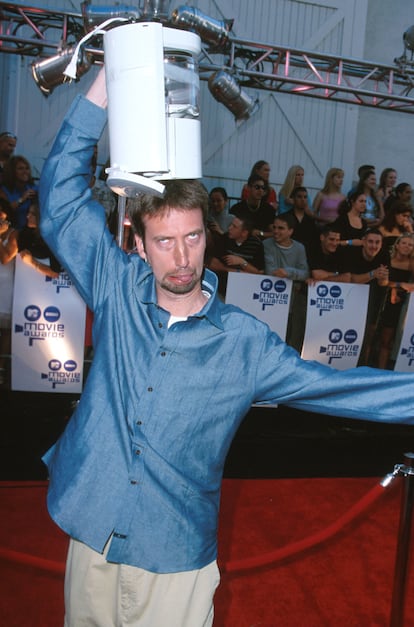
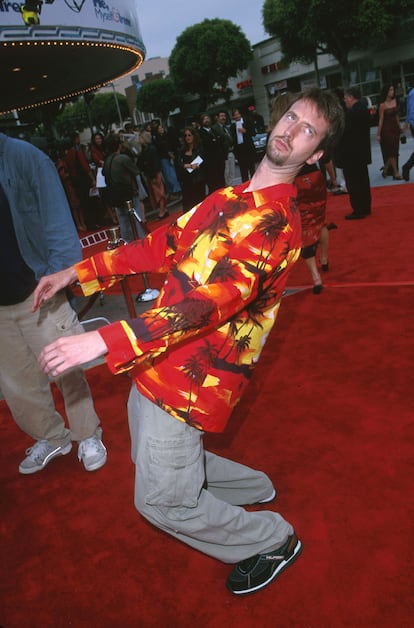
It wasn’t sophisticated humor. Sometimes, his jokes were as simple as pointing at something nonexistent on the sidewalk and waiting for people’s reactions. Everyone would look at the ground, some stumbling. The situation could drag on for minutes. “It was as much about the reaction shots as the joke itself, but the reaction was the punchline,” he explained.
Other times, the jokes were strangely sophisticated. He once drew an abstract painting and hung it surreptitiously in the National Gallery of Canada. No one noticed until days later when he returned, smashed the painting, and watched in horror as visitors and security personnel reacted. Other jokes were simply absurd and disgusting.
Rolling Stone magazine dubbed his “The Canterbury Tales” sketch one of the worst in history. In it, Green donned a blond wig, a pink dress, and tied a bunch of rotting goat heads to a rope, walking down the street growling. “It was one of the most surreal moments from the show — and possibly my life,” he wrote in 2012. “After filming for about five minutes on this hot summer night the smell became unbearable.” There’s a touch of the unclassifiable Andy Kaufman in his humor, though Green admits he didn’t encounter Kaufman’s work until years later.
MTV, still a symbol of youth, freshness, and modernity at the time, took him in. The Tom Green Show, with the help of a moose, became a hit. Green also found rare music success with his song The Bum Bum Song (Lonely Swedish), which was also quoted by Eminem. The only problem was that as his fame grew, his jokes began to feel less natural. The public started recognizing him, and either refused to collaborate or did so with too much enthusiasm, so his victims ended up being elderly people and foreigners.
Despite its short lifespan, TV Guide included The Tom Green Show in 2002 on their list of “the 50 worst programs in history.” It was a milestone for a short-lived show that wasn’t canceled due to a lack of success or the danger of some of its sketches — like throwing objects at moving cars — but because Green was diagnosed with testicular cancer in the early 2000s.
At the time, his bitter feud with Martin Short (of Only Murders in the Building) made it clear that Green understood the limits of humor. After announcing his illness, he was interviewed on Primetime Glick (a parody talk show with Short playing the exaggerated host). During the interview, Short got Green to talk about his cancer, only to ignore him and pretend to have a phone conversation in the middle of it. Green got angry and walked off the show. “I was still fairly new to my cancer recovery, so I didn’t take it very well,” he said. Short apologized, explaining that this was the kind of humor on his show. The prankster got pranked.
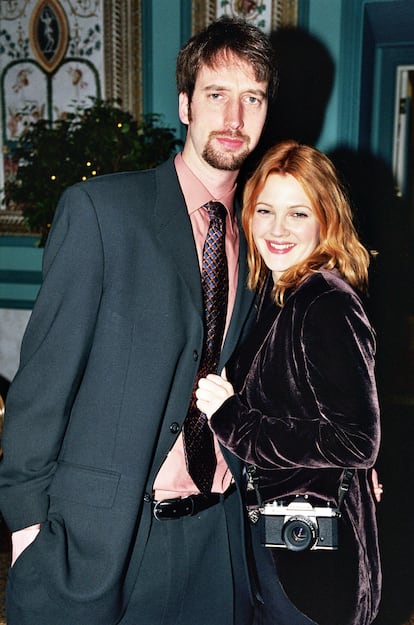
But Green did not shy away from talking about his cancer treatment: the comedian documented the entire process in The Tom Green Cancer Special. He initially considered keeping it a secret, but Green changed his mind when he required a second operation to remove and analyze the lymph nodes in his abdomen. He decided to bring the cameras into the operating room.
“His special is the video generation’s equivalent of the confessional memoir, a kind of public therapy in which self-revelation becomes a survival strategy,” wrote The New York Times. “Beyond its shock value, the show is also a bizarre television landmark, willfully erasing all boundaries between narcissism and art, black humor and gross-out comedy, private and public lives, good taste and bad.”
Green revealed everything: the surgery, the removed testicle, and even a song he wrote about the importance of self-examination. The lyrics appeared on the screen, with a testicle marking the rhythm. The show raised more awareness about cancer among young men than any government campaign.
After leaving MTV, Green took his interviews online, enjoying even greater freedom. He interviewed Steve-O, a member of Jackass — a show that took Green’s chaotic humor and pushed it further — during a nearly four-hour session, both visibly affected by some substance. Celebrities from all walks of life appeared on the show, including Pamela Anderson and Tony Hawk.
However, one of the most significant appearances today is that of a young Joe Rogan, then a budding comedian, UFC commentator, and occasional fighter. Recognizing the potential of Green’s format, Rogan launched his own project, The Joe Rogan Experience, a podcast that would go on to become the most influential in the world. So influential, in fact, that his choice of interviewees before the U.S. elections became almost a matter of state. In 2016, Rogan chose Donald Trump: he’s now a member of the select club of the U.S. president’s best friends.
Green’s television success led him to Hollywood. In addition to his appearances in films like Road Trip, where he puts live mice in his mouth, and Charlie’s Angels alongside his short-lived wife Drew Barrymore, Green starred in and produced the incomprehensible Freddy Got Fingered. The film, his directorial debut, received unanimous negative reviews: “A movie so unrelentingly gross, disgusting and imbecilic that one mourns for the state of humanity while watching it,” wrote one critic. When the film won five Razzie Awards, Green collected his for Worst Actor in the same tuxedo he had worn at his wedding to Barrymore. He then attempted to play the harmonica onstage but had to be escorted off. (In recent years, some have started to recognize the film as a surrealist gem, such as the website Collider.)

He has also vindicated himself. More than a quarter of a century after rising to fame with his then-unprecedented hooliganism, Green now reflects on his legacy through the most fundamental form of comedy: stand-up. Accompanied only by a piano and his dog Charley, who casually walks across the stage as the audience applauds — including his long-suffering parents — in I Got a Mule!. In the standup show, he jokes about the world before the internet and laments the inevitability of death after 50: “Who cares if you die when you only have 12% of life left?”
He criticizes teenagers glued to their phones and reflects on what it was like to be a Canadian kid who made it big in Los Angeles, only to return to Canada after the pandemic and start anew on a farm where coyotes terrorize his chickens. Despite the laughs, a hint of bitterness creeps through, more evident when he speaks about how those who followed in his footsteps amassed multimillions, while he is just the guy who humped a moose and now rides a mule.
Sign up for our weekly newsletter to get more English-language news coverage from EL PAÍS USA Edition
Tu suscripción se está usando en otro dispositivo
¿Quieres añadir otro usuario a tu suscripción?
Si continúas leyendo en este dispositivo, no se podrá leer en el otro.
FlechaTu suscripción se está usando en otro dispositivo y solo puedes acceder a EL PAÍS desde un dispositivo a la vez.
Si quieres compartir tu cuenta, cambia tu suscripción a la modalidad Premium, así podrás añadir otro usuario. Cada uno accederá con su propia cuenta de email, lo que os permitirá personalizar vuestra experiencia en EL PAÍS.
¿Tienes una suscripción de empresa? Accede aquí para contratar más cuentas.
En el caso de no saber quién está usando tu cuenta, te recomendamos cambiar tu contraseña aquí.
Si decides continuar compartiendo tu cuenta, este mensaje se mostrará en tu dispositivo y en el de la otra persona que está usando tu cuenta de forma indefinida, afectando a tu experiencia de lectura. Puedes consultar aquí los términos y condiciones de la suscripción digital.
More information
Archived In
Últimas noticias
The metaverse, four years later: Is it finished or just at a standstill?
$3,000 and a plane ticket: The United States increases incentives for migrants to self-deport before the end of the year
Charles Dubouloz, mountaineering star, retires at 36 with a farewell tour inspired by Walter Bonatti
From the White House to diplomatic gifts: Lego wins over adult fans, brick by brick
Most viewed
- The low-cost creative revolution: How technology is making art accessible to everyone
- Families demand repatriation of bodies of Colombians who died in Ukraine: ‘This war is a slaughterhouse for foreigners’
- Christian Louboutin: ‘Young people don’t want to be like their parents. And if their parents wear sneakers, they’re going to look for something else’
- Christmas loses its festive spirit: ICE fears cast shadow over religious celebrations
- Liset Menéndez de la Prida, neuroscientist: ‘It’s not normal to constantly seek pleasure; it’s important to be bored, to be calm’


